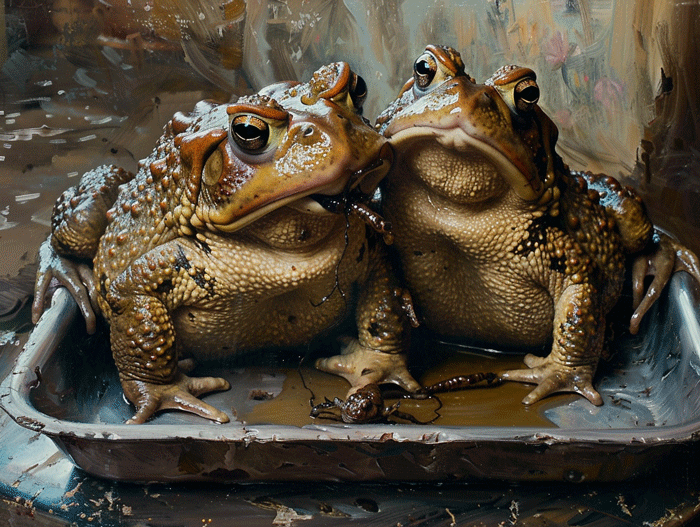If you’ve ever wondered what preys on toads in the wild, you’re in the right place. Toads may seem like tough critters, but they have their fair share of predators lurking in the shadows. From birds to mammals, the list of creatures that enjoy a toad snack might surprise you.
In this text, we’ll jump into the intriguing area of toad predators. You’ll discover the top hunters that consider toads a tasty treat and learn about the strategies they use to catch their slippery prey. So, whether you’re a nature enthusiast or just curious about the circle of life, buckle up for an eye-opening journey into the world of what eats toads.
Key Takeaways
- Toads have a variety of predators including snakes, birds, and mammals with different hunting strategies.
- Toads mainly feed on insects, worms, and small amphibians as part of their diet preferences.
- Conservation efforts such as avoiding pesticides, creating wildlife corridors, wetland restoration, and land conservation are essential for protecting toad populations.
- Understanding the predator-prey relationships and food preferences of toads is crucial for their conservation and ecosystem balance.
Predators of Toads

Snakes
- Snakes are common predators of toads.
- Constriction snakes squeeze toads to subdue them.
- Venomous snakes inject toxins for prey immobilization.
- Some snake species can swallow prey whole due to their flexible jaws.
Birds
- Birds like herons and owls prey on toads.
- Sharp beaks help birds catch and hold onto toads.
- Birds with strong talons can grasp toads securely.
- Mammalian predators include raccoons, foxes, and skunks.
- These predators have sharp teeth for capturing and eating toads.
- Quick reflexes enable mammals to catch fast-moving prey.
Feel the thrill of the hunt as you jump into the world of toad predators.
Food Preferences of Toads

Insects
Toads have a diverse diet, and Insects are a major part of their food preferences. They are skilled at capturing various types of insects such as flies, beetles, and ants.
Worms
Another favorite food of toads is Worms. They rely on their keen sense of smell to detect worms hiding in the soil. Once located, they deftly use their long sticky tongues to catch these squirming delicacies.
Small Amphibians
Toads are known to consume Small Amphibians like frogs and newts. They are agile predators, swiftly targeting and consuming these smaller amphibious creatures as part of their diet.
Conservation of Toad Populations

Protection Measures
- Avoiding Pesticides: By minimizing pesticide use in gardens and agricultural lands, you help protect toads from ingesting harmful chemicals.
- Creating Wildlife Corridors: Establishing wildlife corridors provides safe passages for toads to move between habitats, reducing isolation and promoting genetic diversity.
- Wetland Restoration: Restoring wetlands benefits toads by providing essential breeding grounds and shelter.
- Land Conservation: Protecting natural habitats like forests and grasslands safeguards the homes of toads and the biodiversity they rely on.
Conclusion
Protecting toad populations is essential for maintaining biodiversity. By avoiding pesticides, creating wildlife corridors, restoring wetlands, and conserving natural habitats, we can ensure the well-being of these amphibians. Remember, toads play a vital role in the ecosystem, so it’s crucial to take action to preserve their habitats. Your efforts in conservation can make a significant difference in safeguarding these fascinating creatures for future generations.

Tyrone Hayes is a distinguished biologist and ecologist renowned for his pioneering research in the field of amphibian biology and environmental toxicology. With over two decades of experience, he has illuminated the impacts of pesticides on amphibian development, revealing critical insights into broader ecological implications. Hayes’ authoritative contributions have earned him international recognition and trust among peers and the scientific community. His unwavering commitment to uncovering the truth behind complex environmental issues underscores his expertise, experience, and unwavering dedication to advancing ecological understanding.
